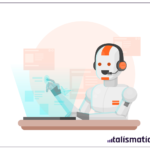The role of HR professionals is changing, and there is no doubt about it. While recruitment, training, and administration continue to be HR responsibilities, strategic partnership and business transformation have also been added to the list. To a large extent, the growing realization – that employees are a business’s biggest assets and that organizational goals cannot be realized without aligning recruitment goals to them; is responsible for this sudden but huge shift in the role of HR professionals. Top management, therefore, expects its recruiters and hiring managers to share insights and ideas that can inform and drive the company’s overall business strategy.
In an interview to the Financial Times, Carmel Galvin, Chief Human Resources Officer at Glassdoor said that the role of HR personnel is evolving from a compliance-only function to a strategic business role. She went on to say that, “The HR professional today is in part a data analyst, a consultant, a marketer, an international business person and a workplace designer.”
But to take up these challenging new roles and to do full justice to them, HR professionals need the best of recruitment technology by their side. An HR business intelligence tool like Talismatic will enable HR folks to ultimately answer questions that will help management stay ahead of the curve.
Answers that an HR business intelligence tool gives top management
As the term suggests, HR business intelligence tools infuse ‘intelligence’ into a business using recruitment insights. Such tools offer recruiters with an HR business intelligence dashboard that displays metrics, graphical representations, and insights that help top management find answers to critical questions like:
Are the resources paying off?
This is one of the toughest and most important management questions, and rightly so. No business can continue spending its resources without determining if they’re leading to anything fruitful at all. Considering the dearth of talent and the stiff competition to acquire it, enterprises end up allocating and spending huge budgets and man-hours on talent acquisition. These enterprises are, therefore, curious to know if these resources are paying off and how can they optimize their use in future. With business intelligence for HR, recruiters can:
- Consolidate hiring data
- Search for talent in the right cities
- Find suitable recruitment sources
- Gauge hiring timeframes
- Form effective job descriptions
Now, with all that information at hand, recruiters can draw insights on where best to spend the company’s resources and how well these resources are paying off.
What are the competitors up to?
You can’t afford to do business in silos; not anymore! You need to know what your biggest competitors are up to and if you’re doing enough to outpace them. What if you could convert your competitors into knowledge bases, informing your future strategies with competitor insights? For instance, if you knew that your competitor is aggressively hiring candidates in a particular location, you could expect them to expand their business activities in that location soon and accordingly chart out your future course of action.
Regarding the role of HR in delivering competitor data to the top management, this is what Tesla’s Chief People Officer, Gabrielle Toledano has to say, “Ultimately, HR has the ability to provide the CEO and other executives with data, analytics and advice so they can see where things are trending and can manage proactively.”
This means the HR department of an organization can steer the future of their company, given the right recruitment metrics. Human resource intelligent systems are built of tools and metrics that help HR professionals to predict recruitment parameters and offer it to the management in an easy and understandable manner. For instance, an HR business intelligence tool like Talismatic will let recruiters:
- Compare how effective their campaign efforts are, with respect to their competitors
- Extract critical insights on what positions their competitors are looking to fill
- Find out if the competition is marketing themselves to the same candidates that they are interested in
- Identify surges in the hiring activities of their competitors
Such data helps recruiters, and eventually the whole company, to benchmark itself against its competition.
What should the next steps be?
No business plans to walk in the dark, with no clarity on what lies ahead. Any proactive management would not just want insights but ‘actionable’ insights that tell them ‘what next.’ HR business intelligence helps recruiters:
- Plan for contingencies
- Align organizational priorities
- Understand recruitment dynamics
- Analyze market trends
- Differentiate hiring strategies
- Offer a reservoir of passive talent pool
All this data helps recruiters to sketch a bird’s eye view of the larger market for its management and help devise a holistic plan for growth and expansion. Tools like Talismatic help organizations unlock a successful business strategy using the key of ‘intelligent recruitment.’
The right talent metrics can do much more than an organization would have ever imagined. So, go ahead and answer some of those difficult but necessary management questions with Talismatic’s HR business intelligence tool.

Just to let you know, this post seems a little bit funny from my android phone. Who knows maybe its just my mobile phone. Great article by the way.
We like your post, the point that your
Business Intelligence Solution Providers in India